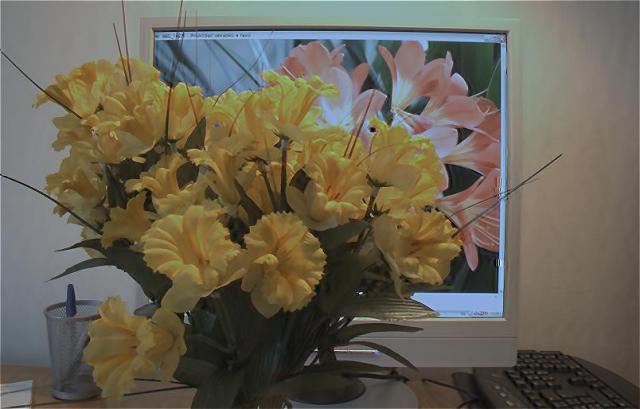Restoration of images blurred by camera motion
The blur caused by camera motion is a serious problem in many areas of optical imaging such as remote sensing, aerial reconnaissance or digital photography. As a rule, this problem occurs when low ambient light conditions prevent an imaging system from using sufficiently short exposure times, resulting in a blurred image due to the relative motion between a scene and the imaging system. For example, the cameras attached to airplanes and helicopters are blurred by the forward motion of the aircraft and vibrations. Similarly when taking photographs by hand under dim lighting conditions, camera shake leads to objectionable blur.
There has been a considerable effort in the image processing community in the last decades to find a reliable algorithm to remove the blurring in software. Despite undisputable progress in this area, a method working for an arbitrary blur is not known.
Fig. 1 Two images blurred by camera motion (click images to enlarge).
In recent years impressive results were achieved for the cases where the blur is homogenous in the whole image. First using multiple input images (see Multichannel blind deconvolution) and later with slightly worse results using just one image (Rob Fergus in 2006).
However, there are many situations where the assumption of homogenous blur is not satisfied. An important one is the case where the camera movement contains significant translational, i.e. non-rotational, component. In this case the blur depends locally on an unknown distance of objects and can differ in each pixel. In a sense it is a generalization of the well known problem of stereo reconstruction. The number of unknowns is so large that it seems hardly possible to remove the blur using just one image.
However, even if we use multiple input images, the problem is very complex. During our research we tried to tackle the problem using a variational method estimating simultaneously a sharp image and depth map. Finally, we succeeded only after constraining the movement further. We developed an algorithm working for the special case where the camera moves along an arbitrary curve lying in one plane parallel to the image sensor without any rotations. Figure 1 shows an example of blurred images taken by a camera mounted to a vibrating framework. Figure 2 shows the result of our algorithm. Details are described in the following papers.
Publications:
-
Space-Variant Restoration of Images Degraded by Camera Motion Blur, IEEE Transactions on Image Processing vol.17, 2 (2008), p. 105-116
-
Restoration of color images degraded by space-variant motion blur, Lecture Notes in Computer Science vol.2007, 4673 (2007), p. 450-457, Computer Analysis of Images and Patterns, (Vienna, AT, 27.08.2007-29.08.2007)
Download PDF
| Details: | |
| Duration: | Since 2004 |
| Contact person: | Michal Šorel |
| Involved people: | Jan Flusser |



